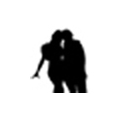How are key signatures for quarter tones denoted?
For example, in 31-TET, all tones are accessible via (double) sharps or (double) flats on CDEFGAB. So there exists key signatures, for example, D double-flat major. (That's same as C half-sharp major.) Wikipedia has a comprehensive list of the keys.
But what for 24-TET? The in-between tones are not accessible via sharps nor flats on CDEFGAB. I can't think of the key signature, for example, C half-sharp major. How should they be denoted?
2 Comments
Sorted by latest first Latest Oldest Best
A quartertone key signature sounds extremely complicated and painful to read.
If for some reason you need to notate a piece in a quartertone key I'd say add staff text at the beginning of the piece telling the performer to re-tune their instrument a quartertone up or down and use the nearest normal key signature.
Alternatively, use no key signature and go wild with the half-accidentals.
A quick DuckDuckGo search for ‘24-TET notation’ leads to the wikipedia article on quarter tones which shows one possible notation system ,and to Introduction to quarter tones which details another.
As a player who only ever produces quarter tones accidentally or as part of a slide, I cannot advise on which is ‘better’ ...
Terms of Use Privacy policy Contact About Cancellation policy © freshhoot.com2025 All Rights reserved.

